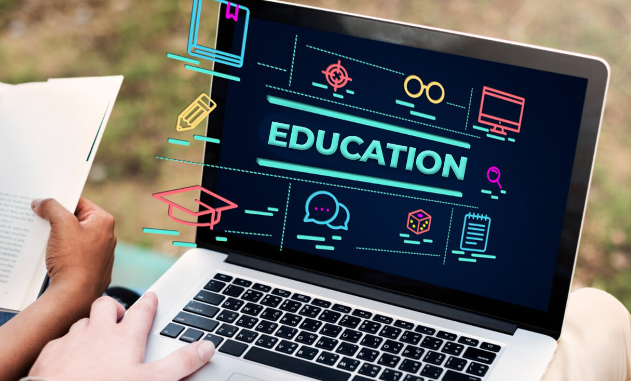
Introduction
The infusion of technology into the realm of education has revolutionized the way we learn and teach. This digital transformation has ushered in a new era of educational opportunities, offering personalized learning, expanding access to knowledge, and enhancing collaboration. In this comprehensive exploration, we will delve deep into the multifaceted role of technology in education, scrutinizing how it has reshaped traditional educational practices and broadened the horizons of learning in the digital age.
1. Access to Knowledge
Technology has acted as a powerful equalizer, democratizing access to knowledge. The internet serves as an expansive repository of information, making educational resources, research materials, and instructional content available to a global audience. This connectivity transcends geographical and economic barriers, extending educational opportunities to people around the world.
2. Personalized Learning
Technology has paved the way for personalized learning experiences. Adaptive learning platforms, AI-driven tutoring systems, and learning analytics empower educators to tailor instruction to the unique needs of each student. This personalized approach not only enhances student engagement but also drives improvements in learning outcomes.
3. Enhanced Engagement
Cultivating student engagement is pivotal to effective learning, and technology plays a central role in achieving this goal. Gamification, interactive learning modules, and multimedia content transform learning into a captivating and interactive journey. These innovations encourage active participation and enhance knowledge retention.
4. Collaboration and Communication
Technology has revolutionized how students and educators collaborate and communicate. Virtual classrooms, online discussion boards, and real-time collaboration tools facilitate seamless communication, connecting students and teachers across the globe. This fosters a sense of community and enables collaborative projects, transcending geographical boundaries.
5. Blended Learning
The emergence of blended learning models combines traditional classroom instruction with online learning. This versatile approach offers flexibility and adaptability, allowing students to access content at their own pace while still benefiting from in-person instruction. Blended learning has become an integral part of modern education.
6. Accessibility and Inclusivity
Technology has made great strides in improving accessibility and inclusivity in education. Assistive technologies such as screen readers, voice recognition software, and captioning services empower students with diverse needs, ensuring that no one is left behind in the learning process.
7. Resource Efficiency
Institutions of learning are becoming more resource-efficient through technology. Digital record-keeping, e-textbooks, and learning management systems reduce the need for extensive paperwork, save resources, and offer more sustainable alternatives in the educational ecosystem.
8. Teacher Professional Development
Technology has become a potent tool for the continuous professional development of educators. Online courses, webinars, and a plethora of digital resources provide teachers with opportunities to stay abreast of the latest pedagogical practices and technological tools, enhancing their teaching skills.
9. Virtual Reality and Augmented Reality
Virtual reality (VR) and augmented reality (AR) have introduced immersive learning experiences. Students can embark on virtual journeys to explore historical sites, dissect virtual organisms, or simulate complex scientific experiments. These technologies enhance comprehension and provide students with extraordinary learning opportunities.
10. Preparing for Future Careers
The integration of technology into education equips students with vital digital literacy and problem-solving skills essential for future careers. Exposure to coding, data analysis, and digital tools prepares students for a dynamic and technology-driven job market, giving them a competitive edge.
Conclusion
Technology has evolved into an indispensable educational tool, redefining the learning landscape. It has expanded access to knowledge, heightened student engagement, promoted collaborative learning, and personalized educational experiences. Additionally, technology has ushered in new possibilities for inclusivity and accessibility, ensuring that learners with diverse needs can fully participate in the educational journey.
Despite the evident benefits, the integration of technology in education is not without its challenges, including issues related to equitable access, data privacy, and the potential for digital distractions. However, the merits of technological integration far outweigh the drawbacks. As technology continues to evolve, its role in education will only become more profound, reshaping the future of learning and equipping students with the skills they need to thrive in an ever-changing world. The amalgamation of technology and education holds the promise of a brighter, more accessible, and more customized future for learners around the globe.

Leave a Reply